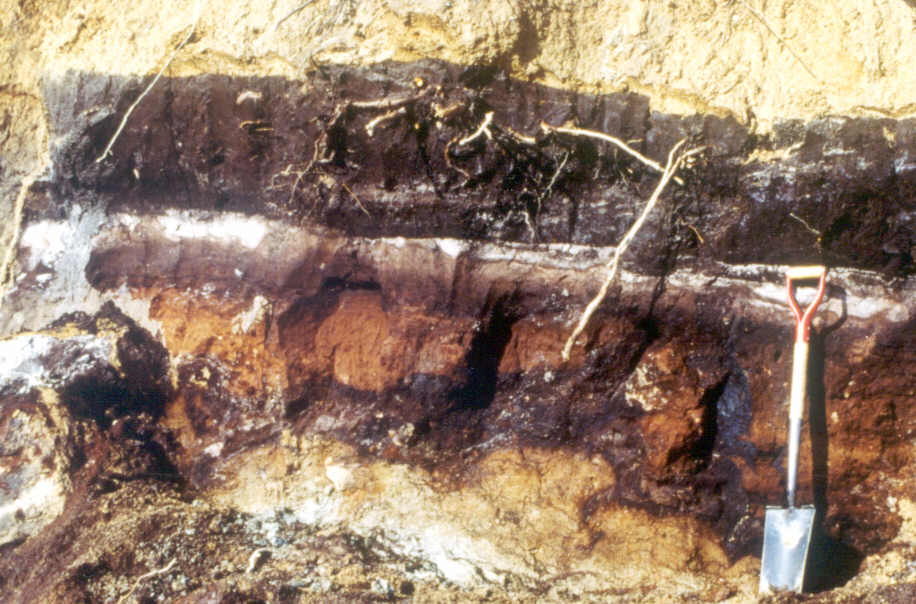
New England Soil Profiles
Berryland Series

Berryland Soils are very poorly drained soils formed in sandy glacial fluvial deposits. Berryland soils have and iron-humus rich subsoil called a spodic horizon in soil taxonomy. This profile has the following morphology: surface layers of organic and mineral sandy material (dark surface), a white eluvial horizon of un-coated quartz sand grains, a series of spodic horizons (Bhs-Bs-Bhs) cemented in some areas, and a gray Cg horizon.
Photo: Jim Turenne, taken from a wave cut outcrop on Nauset beach, Cape Cod (41.857150 N, -69.950304 E).
|
|
Berryland Properties:
Taxonomic
Classification: Sandy, mixed, mesic, Typic Endoaquods.
Drainage
Class: Very poorly drained.
Parent
Material: Fluvial deposits.
Permeability:
Moderately rapid throughout.
Available
Water Holding Capacity: Low.
Soil
Reaction: Very strongly or extremely acid in solum, very
strongly or strongly acid in the substratum.
Depth
to Bedrock: Greater than 65 inches.
Seasonal
High Watertable: Depth: + 0.5 to 0.5 feet below the
surface.
Type: Apparent, (water table may be perched in areas with
a firm layer during periods of heavy precipitation.
Months: Oct. to Jun.
Hydrologic
Group: D.
Hydric
Soil: Yes.
Flooding/Ponding
Potential: Frequency and Type: Map units 007 & 011:
Frequently ponded.
Duration and Months: Long, December to April.
Map Unit 007 is artificially flooded throughout the year for
cranberry management practices.
Potential
Inclusions: Very poorly drained Swansea and Scarboro soils
are on similar landforms. Poorly drained Pipestone, Saugatuck,
and Wareham soils are on higher elevations. Moderately well
drained Deerfield and Sudbury soils are on upland areas.
More info on Berryland soils | Cranberry Bed Description (map unit 23)